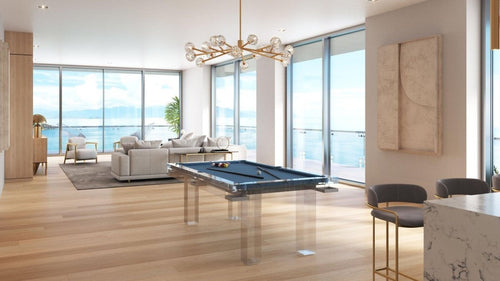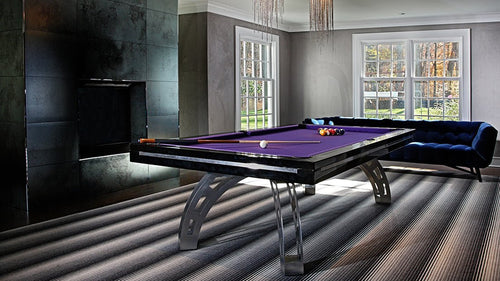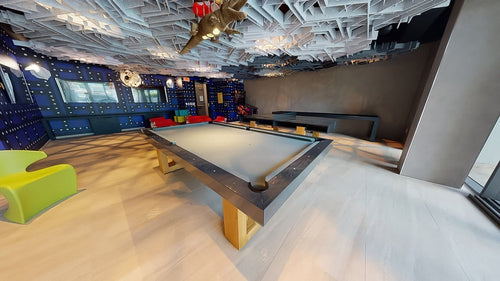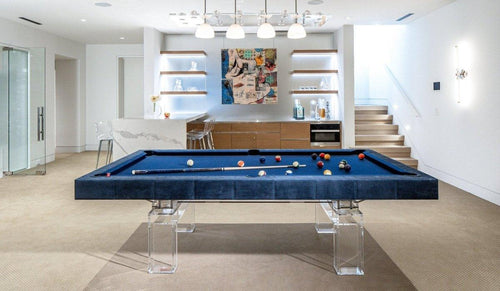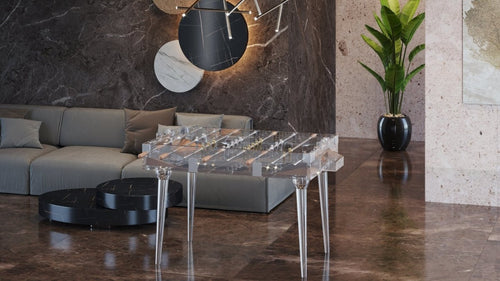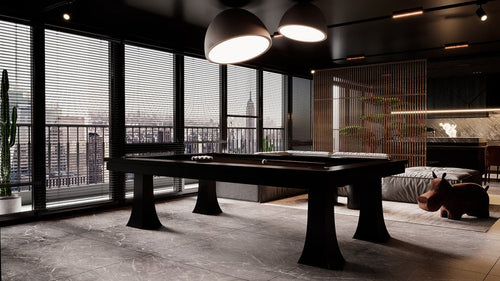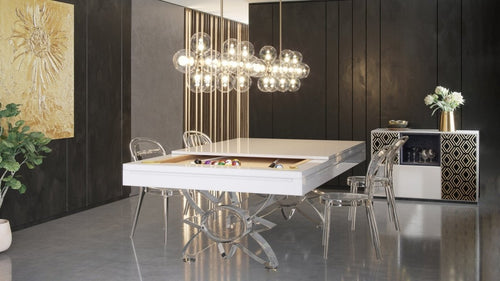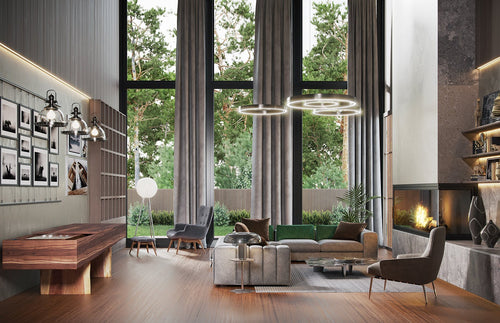Enjoy our modern designs
If you've ever watched a professional snooker match on TV, you might have noticed a small display near the foot of the table, showing a number—usually around 45 or 50 degrees. This refers to the temperature at which the table is heated. But why heat a pool or snooker table? Let's dive into the reasons and benefits behind this practice, along with the mechanisms involved in achieving it.
Reducing Humidity and Enhancing Speed
One of the primary reasons for heating a pool or carom billiard table is to control the moisture levels on the playing surface. The slate bed of a carom billiard table is often heated to about 5 °C (9 °F) above room temperature. This subtle increase in temperature helps keep moisture out of the cloth, which is essential for maintaining consistent ball roll and rebound. By reducing the humidity, the table cloth experiences less friction, allowing the balls to travel further and faster. This is especially important in games like three-cushion billiards, where the balls need to cover greater distances with precision.
What Are the Digital Numbers on a Snooker Table?
Those digital numbers displayed on a snooker table typically indicate the temperature of the table, which is maintained around 45 to 50 degrees Celsius (113 to 122 degrees Fahrenheit). This optimal temperature ensures the slate remains at the perfect level of warmth to keep the cloth moisture-free, guaranteeing smooth ball roll during matches. These numbers help tournament organizers and players ensure that conditions remain consistent throughout the game.
Why Temperature Matters in Snooker
A heated snooker table ensures consistent playability, making it a requirement for professional matches. The slight warmth helps the balls travel faster and with greater precision, which is essential for maintaining the integrity of high-level gameplay. Without heating, the cloth could slow the game down, creating unwanted inconsistencies in ball movement and shot accuracy.
In fact, the International Billiards and Snooker Federation (IBSF) recommends heated tables in all professional tournaments to ensure the best possible playing conditions. While temperatures are not strictly mandated, keeping the table warm helps create the ideal playing environment for players to perform at their best.
How Do They Heat Up a Billiard Table?

Heating a pool or billiard table, especially one not originally designed with this feature, involves several potential methods, each with its own considerations:
-
Gutter Heaters: One practical method is to use strips of gutter heaters, commonly found in hardware stores, which are traditionally used to prevent ice buildup on roofs. These heaters can be attached to the underside of the slate using materials like window screens to hold them in place between the table's crossbraces. This approach is cost-effective and relatively simple, but care must be taken to manage electricity consumption.
-
Nichrome Wire Systems: Another more intricate solution involves the use of Nichrome wire, a type of resistance wire that heats up when electricity passes through it. This method requires careful installation, often involving drilling into the table's frame to install dowels that support heating panels beneath the slate. These panels, usually made from cement board or similar materials, hold the Nichrome wire in place. The wire's heat is then insulated with high-temperature mineral wool to ensure that it efficiently warms the slate without overheating.
-
Infrared Heating Films: A modern and highly efficient method for heating billiard tables is the use of infrared heating films. These films are extremely thin, with a material thickness of less than 1 mm, and offer nearly full-surface heating coverage. The film is laid directly on a hard fiber board and fixed in place with adhesive strips. A temperature sensor, used to monitor and control the film’s temperature via a thermostat, is installed directly in the panel. This setup allows the heat to be directly transferred to the stone slab without any loss through cavities, making it a more energy-efficient option compared to traditional methods.
-
Thermostats and Insulation: Regardless of the heating method, it's crucial to use a thermostat to regulate the temperature and prevent excessive energy use. Additionally, insulating the table when not in use—such as covering it with thick styrofoam—can help retain heat and reduce energy costs.
-
Space Heaters and Electric Blankets: In some cases, particularly for tables in colder environments like unheated garages, players have used space heaters or even electric blankets as a temporary solution to keep the slate warm. While these methods can work in a pinch, they are less efficient and provide less consistent results than a dedicated under-table heating system.
Ensuring Consistent Playability
An electrically heated table is a requirement under international tournament rules to ensure the best possible ball rolling, though specific temperatures are not mandated. This is particularly crucial for games like three-cushion billiards and artistic billiards, where the consistency of ball movement is vital for high-level play. Heating the table helps maintain a uniform surface, preventing the cloth from becoming damp or uneven, which could affect the accuracy and speed of the shots.
Historical and Modern Applications

The practice of heating billiard tables has a long history. Queen Victoria, for instance, had a billiard table heated using zinc tubes, primarily to keep the ivory balls from warping, which was a significant concern at the time. The first recorded use of electric heating in a billiard table was during a 1927 balkline tournament between Welker Cochran and Jacob Schaefer Jr. in New York. The event was significant enough to be announced by The New York Times, highlighting the introduction of a heated table to ensure the best playing conditions.
Importance in Carom Billiards

Heating is particularly important in carom billiards, especially for games like three-cushion billiards, where precise ball control is critical. In countries where carom games are popular, even local billiard halls often feature heated tables to ensure that players experience the best possible conditions. The consistent roll and rebound provided by a heated table are crucial for the complex shots and strategies involved in these games.
DIY Heating Options for Home Tables
While professional snooker tables come equipped with built-in heating systems, some players opt to retrofit their tables for home use. There are several methods to achieve this:
-
Gutter Heaters: A cost-effective solution where heating strips, typically used for roofs, are installed under the table.
-
Space Heaters: Some players use portable heaters or electric blankets to warm the slate. While not as effective as integrated systems, these can serve as a temporary solution in colder environments, such as garages.
Conclusion
In summary, heating a snooker table is more than just a luxurious addition—it’s a crucial element for ensuring fast, consistent play by reducing humidity and friction on the table’s surface. Whether you’re a casual player or a professional, understanding the reasons behind this practice and the technologies involved can deepen your appreciation for the game.
If you’re interested in adding snooker table heaters to your setup or need guidance on maintaining optimal playing conditions, feel free to reach out to us at sales@pooltableportfolio.com or call 888.617.7665. We offer a range of custom solutions to enhance your snooker experience.


